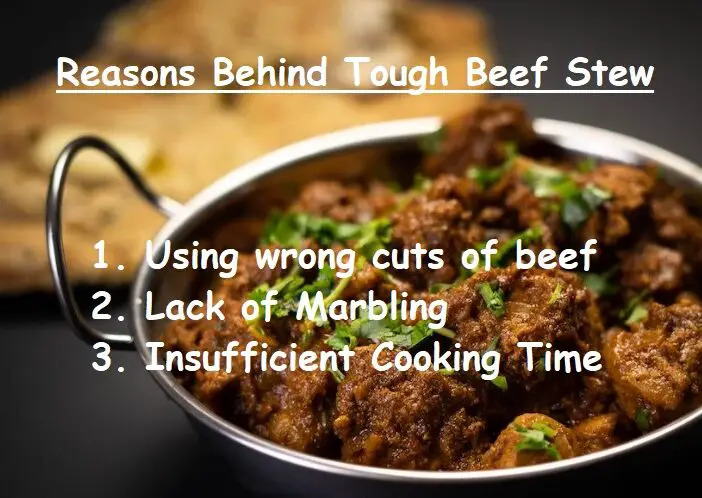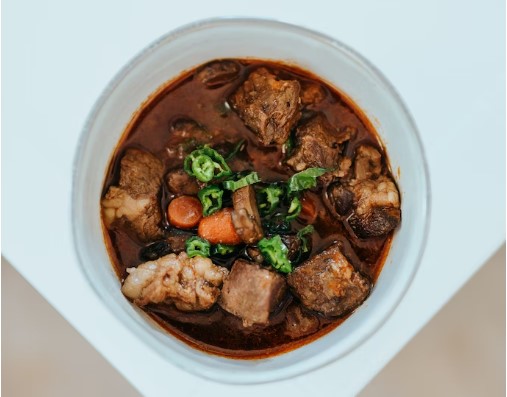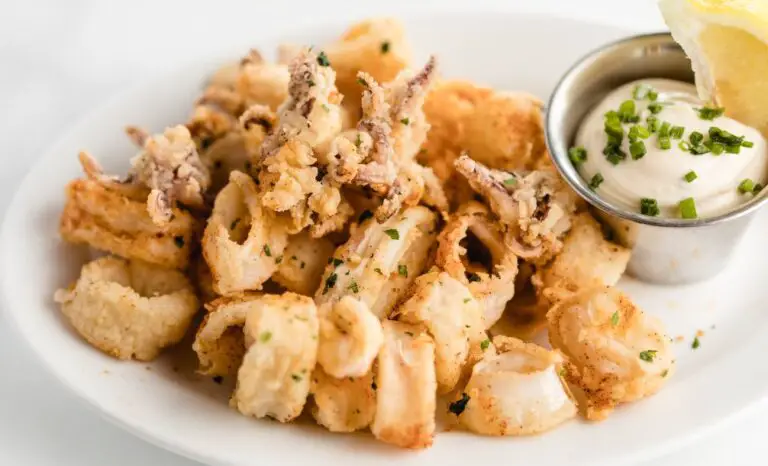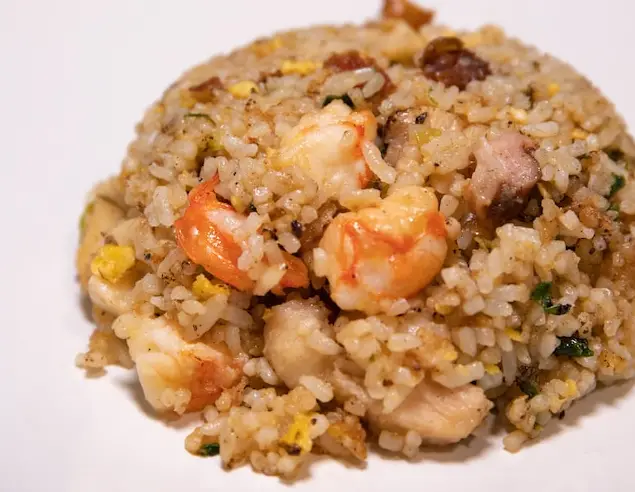Few dishes evoke the warmth and comfort of home-cooked meals quite like a hearty beef stew. Imagine the anticipation as you lift the lid, only to discover that the meat is tough and chewy, instead of meltingly tender as you had hoped. If you’ve ever found yourself grappling with this culinary conundrum, fear not – you’re not alone. Many seasoned cooks and culinary enthusiasts have faced the challenge of tough beef in their stews. Let’s dive into into this blog post to demystify this issue and help you achieve beef stew perfection.

Reasons Behind Tough Beef Stew
1. Meat Matters: The foundation of any successful stew is the meat itself. Using cuts of beef that are inherently tough or not suitable for long, slow cooking can lead to disappointing results. Supermarket “beef for stew” often contains a mishmash of cuts, some of which may not be ideal for achieving tenderness.
2. Lack of Marbling and Connective Tissue: Marbling – the fine streaks of fat running through meat – plays a crucial role in achieving tenderness and flavor. Cuts with higher marbling, such as chuck or oxtail, are better suited for stew due to the presence of connective tissue that breaks down during extended cooking.
3. Insufficient Cooking Time: Rushing the cooking process is a common pitfall. While some recipes suggest a brief simmer, truly tender beef requires time to allow the collagen-rich connective tissue to dissolve into gelatin, transforming tough meat into a melt-in-your-mouth delight.
How to Prevent Tough Beef Stew
1. Choose the Right Cut: Elevate your stew game by selecting cuts known for their tenderness and flavor. Chuck, brisket, short ribs, and oxtail are stellar options. Opt for well-marbled cuts with ample connective tissue, as these traits contribute to a fork-tender texture.
2. Low and Slow Cooking: Patience is a virtue when it comes to stew. Set your sights on an extended cooking period, preferably using a slow cooker, Dutch oven, or braising pot. Low and slow cooking allows the collagen in tougher cuts to break down, leading to tender results.
3. Incorporate Acidic Ingredients: Acidic elements like red wine, tomatoes, or vinegar not only infuse your stew with rich flavors but also assist in tenderizing the meat. These ingredients work wonders in breaking down tough fibers, resulting in a more pleasing mouthfeel.
Tips for Making the Perfect Beef Stew
1. Embrace the Searing Step: Start by searing the meat in a hot pan before transferring it to your stewing vessel. Searing enhances flavor through caramelization and contributes to a more appealing texture.
2. Deglazing the Pan: After searing the meat, deglaze the pan with wine, broth, or another flavorful liquid. Scrape up the browned bits from the bottom of the pan – these carry a wealth of flavor that will enhance your stew.
3. Monitor Liquid Levels: Maintain an appropriate balance between meat and liquid. Too much liquid can dilute flavors, while too little can lead to excessive evaporation and overcooking. Aim for a harmonious ratio that allows the meat to be submerged but not swimming.
4. Layer Flavors: Build layers of flavor by adding aromatic vegetables, herbs, and spices to your stew. The interplay of these components creates a multidimensional taste experience that complements the tender beef.
5. Time for Tenderization: Resist the temptation to rush the cooking process. Plan for a minimum of 2-3 hours of gentle simmering to ensure the beef reaches its full potential of tenderness.
6. Test for Doneness: Regularly check the stew’s progress by testing a piece of meat for tenderness. When it yields easily to a fork or knife, you’ll know that it’s reached the desired level of succulence.
Conclusion
As you embark on your quest for the perfect beef stew, armed with the insights shared by the culinary community, you’re well on your way to achieving a triumph of tenderness and flavor. The key lies in selecting the right cut, embracing essential techniques like searing and slow cooking, and layering flavors to create a harmonious and satisfying dish. By addressing the reasons behind tough beef stew and implementing the preventative measures and tips provided, you’re poised to create a culinary masterpiece that delivers on both taste and texture. So, roll up your sleeves, gather your ingredients, and let the aroma of a simmering, tender beef stew fill your kitchen – a testament to your dedication to culinary excellence. With each tender bite, you’ll savor the fruits of your labor and share in the timeless joy of a truly exceptional homemade beef stew.




